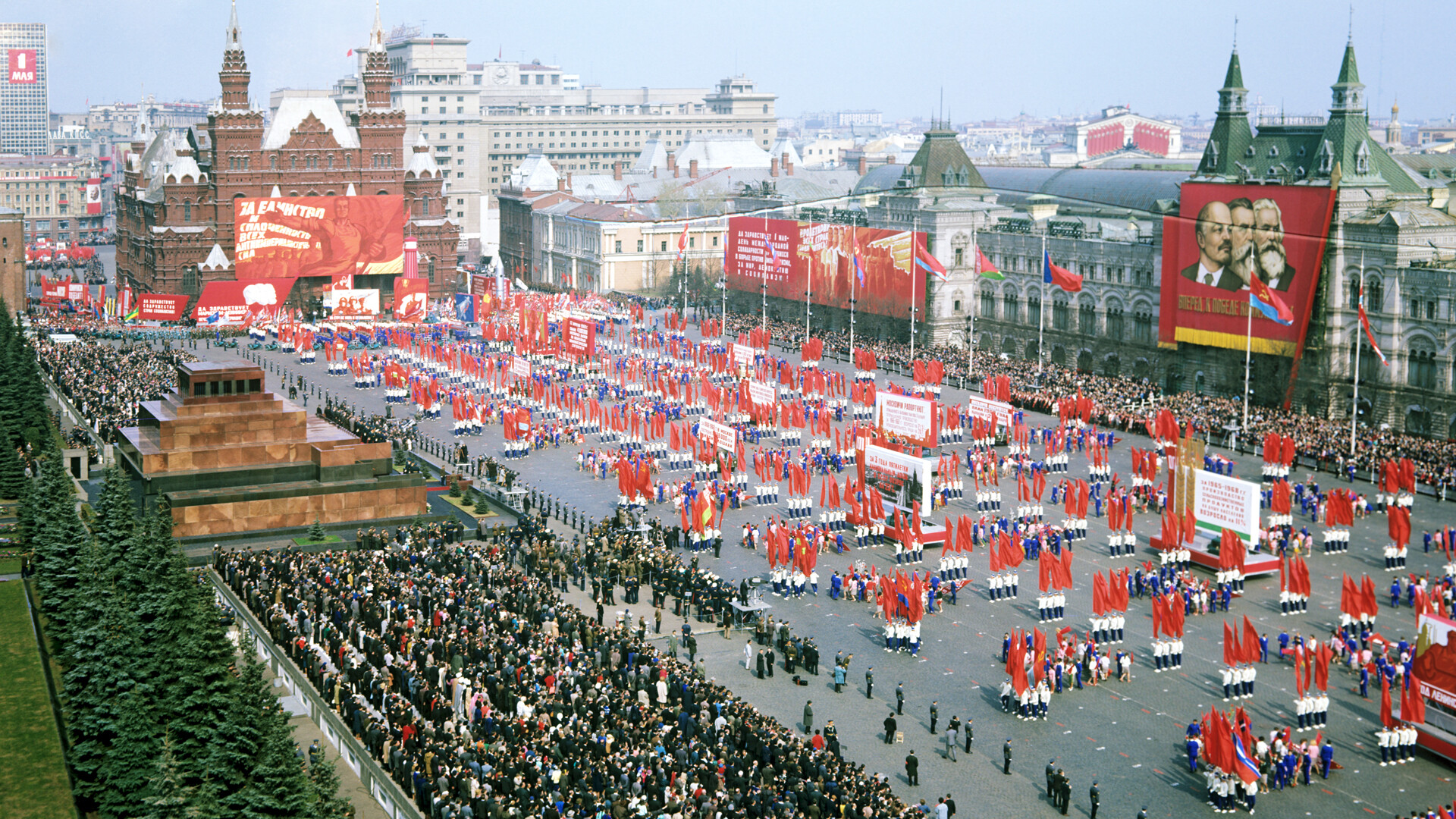
Athletic parade on the Red Square, May 1st, 1969.
Ivan Denisenko/SputnikPhysical education was one of the pillars of the socialist upbringing of young people in the USSR. Every Soviet citizen knew the sound of the morning exercise program on the radio, while children in schools engaged in physical education and attended various sports clubs. And the most athletic who passed required standards were awarded badges.
The desire to create a “superhuman” implied not only ideological re-education and unconditional devotion to the ideas of communism, but also a desire for physical perfection. A Soviet man had to be healthy, strong and resilient, not only to work well, but also, if necessary, to fight back against enemies.
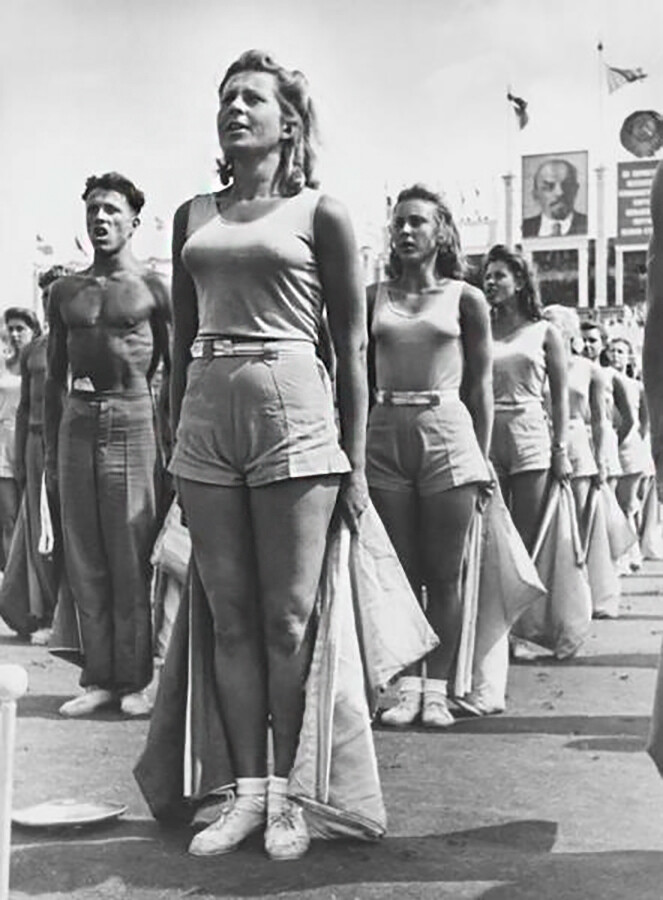
Athletic parade at the 'Dinamo' stadium, 1930s.
Ivan Shagin/МАММ/МДФ/Russia in photoThe first organization to engage in physical education of the population was the ‘Vsevobuch’ (general military training), established in 1918. There, all men between the ages of 18 and 40 were trained in shooting, field service, trench work and other areas of military art. Women were trained on a voluntary basis. On the first anniversary of ‘Vsevobuch’, a parade was held on the Red Square with the participation of cadets and combat battalions, who were joined by physical training officers - it was their first appearance on the Red Square.
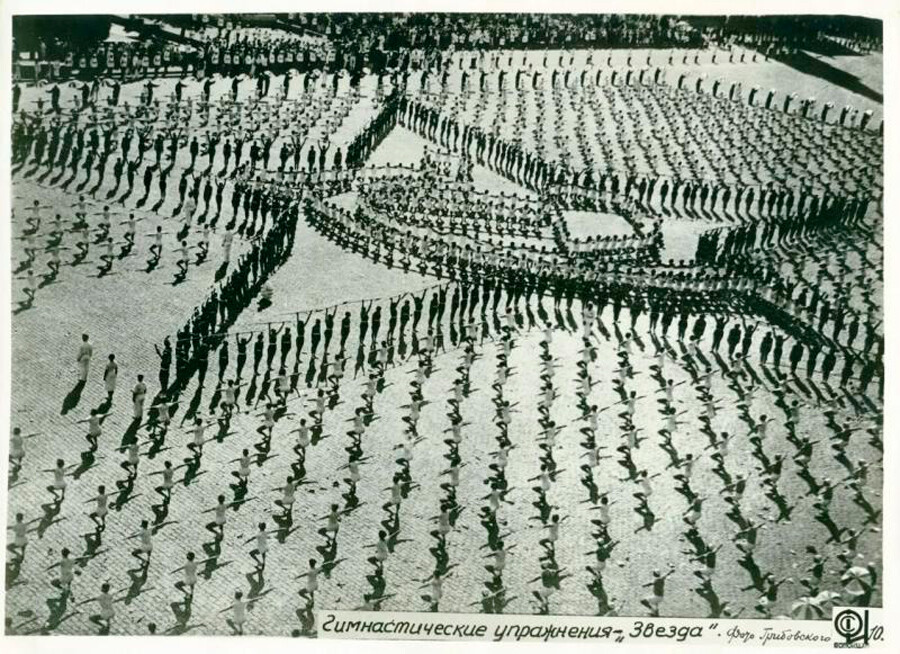
Gymnastic exercise 'Star', July 15th, 1935.
A. Gribovsky/МАММ/МДФ/Russia in photoIn the 1920s, parades began to mark major public holidays and, from 1931, physical education parades began to be held annually.
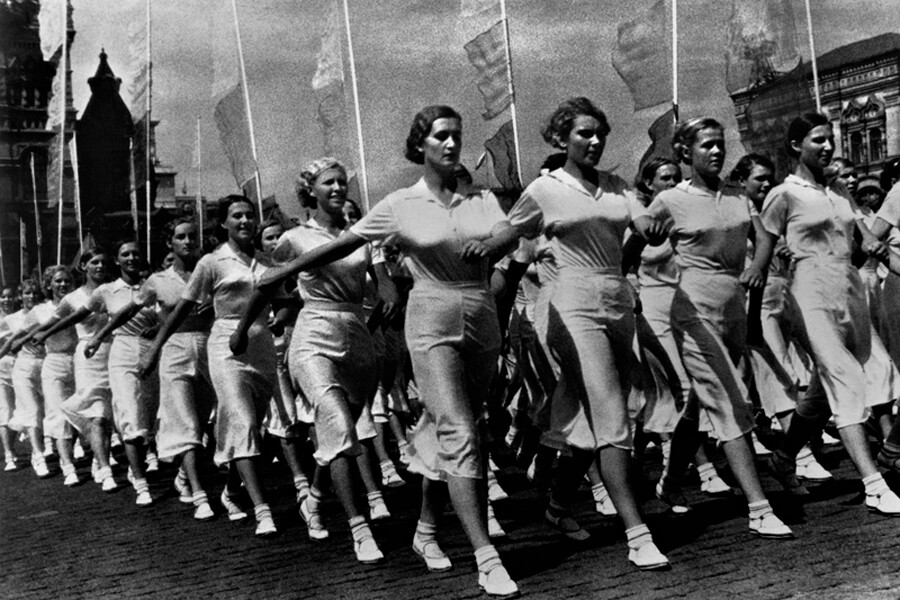
'Youth'. Athletic parade on the Red Square, 1932.
Ivan Shagin/МАММ/МДФ/Russia in photo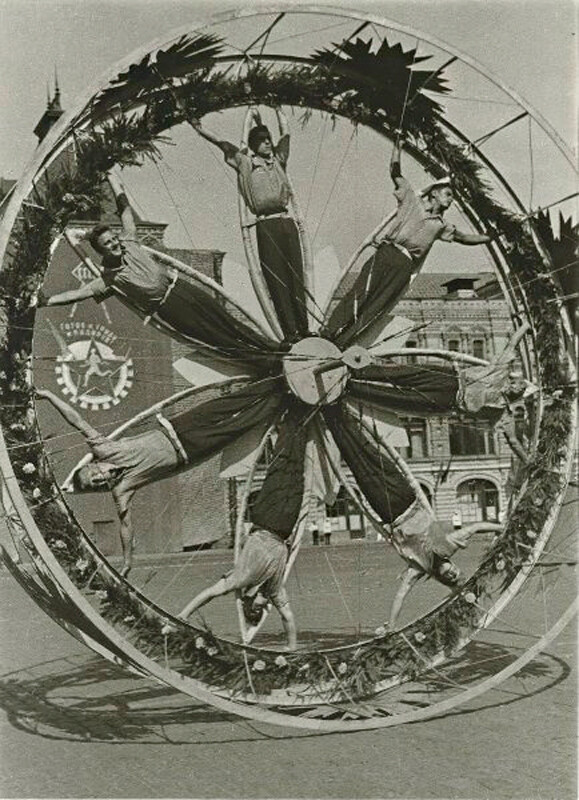
Athletic parade on the Red Square, 1936.
Alexander Rodchenko/МАММ/МДФ/Russia in photoThey were designed to popularize sports among Soviet citizens, especially - young people. In 1930, physical education was even made a mandatory subject in all universities of the country and, to this day, students are required to attend it on a par with other subjects.

Athletic parade on the Red Square, 1930s.
Emmanuil Evzerikhin/МАММ/МДФ/Russia in photo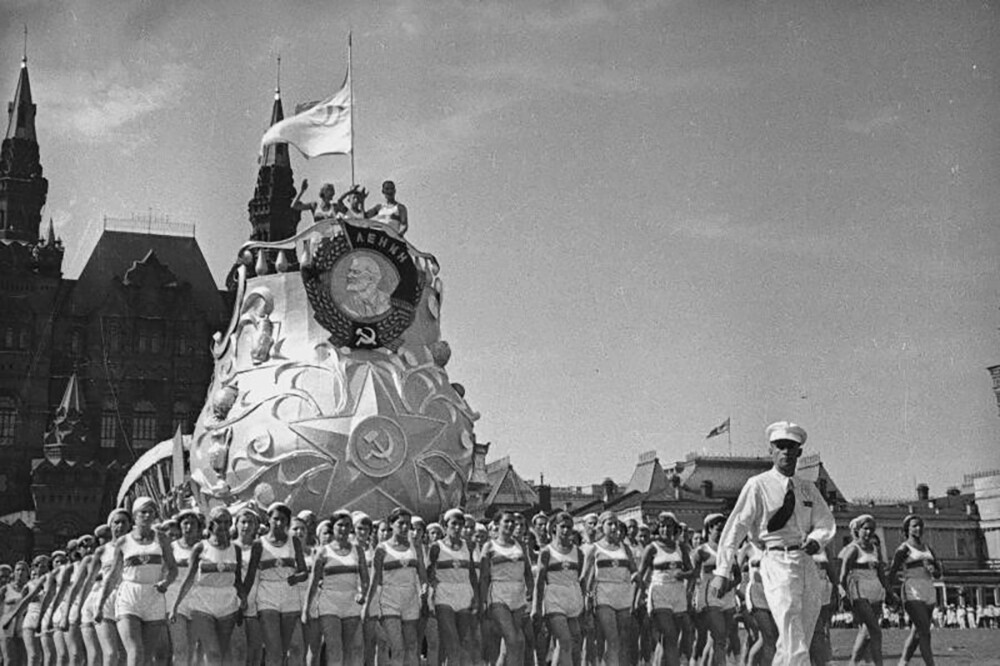
Athletic parade on the Red Square, 1938.
Sergey Vasin/МАММ/МДФ/Russia in photoThe purpose of these athletic performances was not only to popularize a healthy way of life. The parades were supposed to prove the success of the Soviet government: the USSR had created a new man, developed not only spiritually, but also physically. Propaganda posters referred to the athletes as “the Red Army’s combat reserve”, while the parades themselves were “a powerful demonstration of the strength and invincibility of the Soviet people”. It was at the 1936 parade of athletes that the slogan “Thanks Comrade Stalin for a Happy Childhood!” appeared.
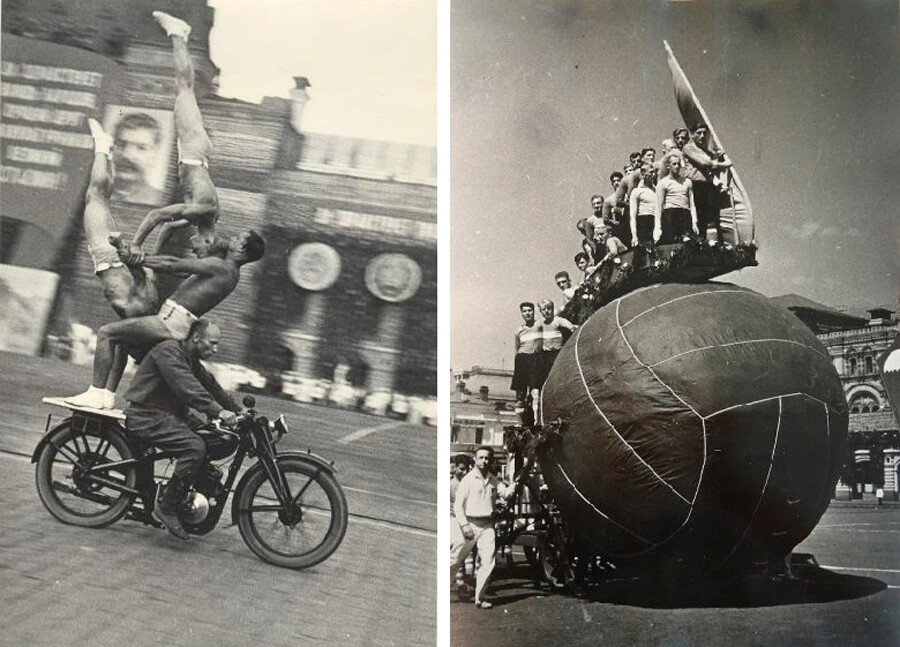
Athletic parades, 1930s.
Emmanuil Evzerikhin, Ivan Shagin/МАММ / МДФ/Russia in photoIn the Soviet Union, there was a program called ‘GTO’ (‘Gotov k trudu i oborone’ or ‘Ready for Labor and Defense’), which encouraged young people to achieve a high level of athletic performance. In order to get a GTO badge, one had to fulfill a set of standards, which depended on the age group. Any citizen aged from 10 to 60 years (up to 55 years for women) with a satisfactory state of health could pass the standards. This program still exists in Russia today.
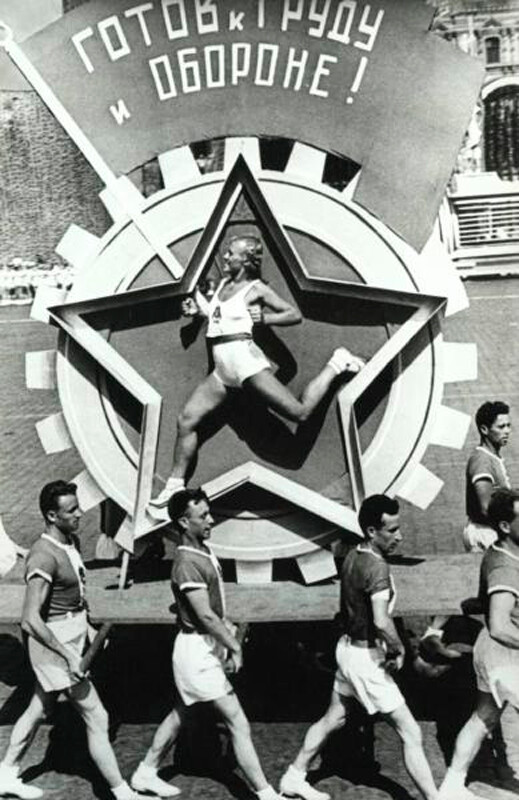
GTO badge, 1936.
Alexander Rodchenko/МАММ/МДФ/Russia in photoIn 1939, the parades were timed to coincide with the All-Union Day of Physical Culture. During World War II (1941 to 1943), parades were not held, but the tradition was renewed in 1944. In August 1945, the parade was dedicated to the victory in the Great Patriotic War.
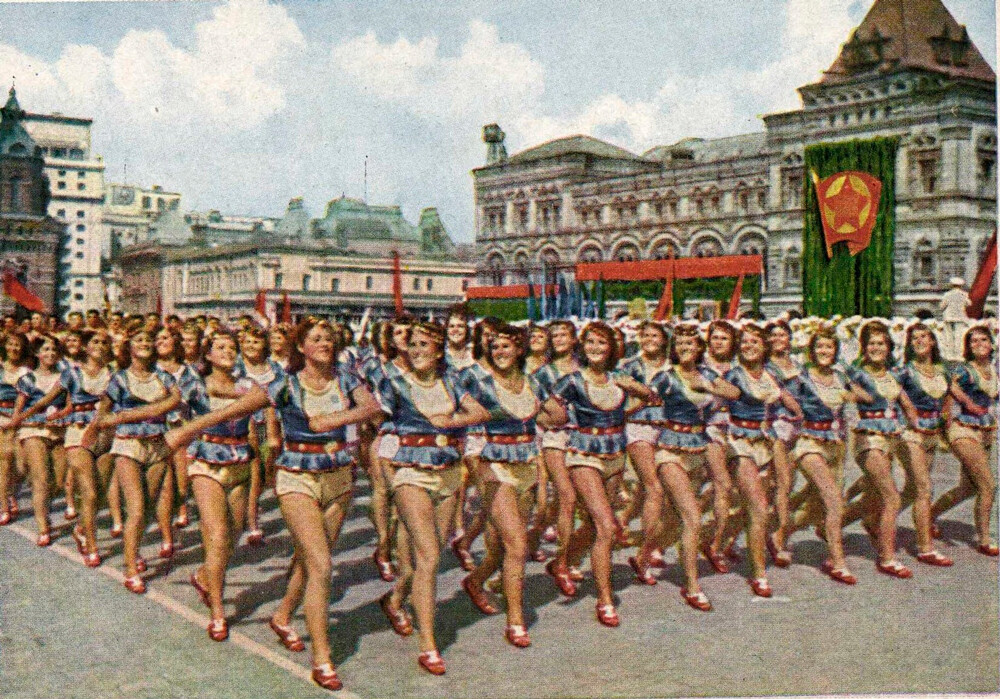
Shot from the film 'All-Union athletic parade', 1945.
Public domain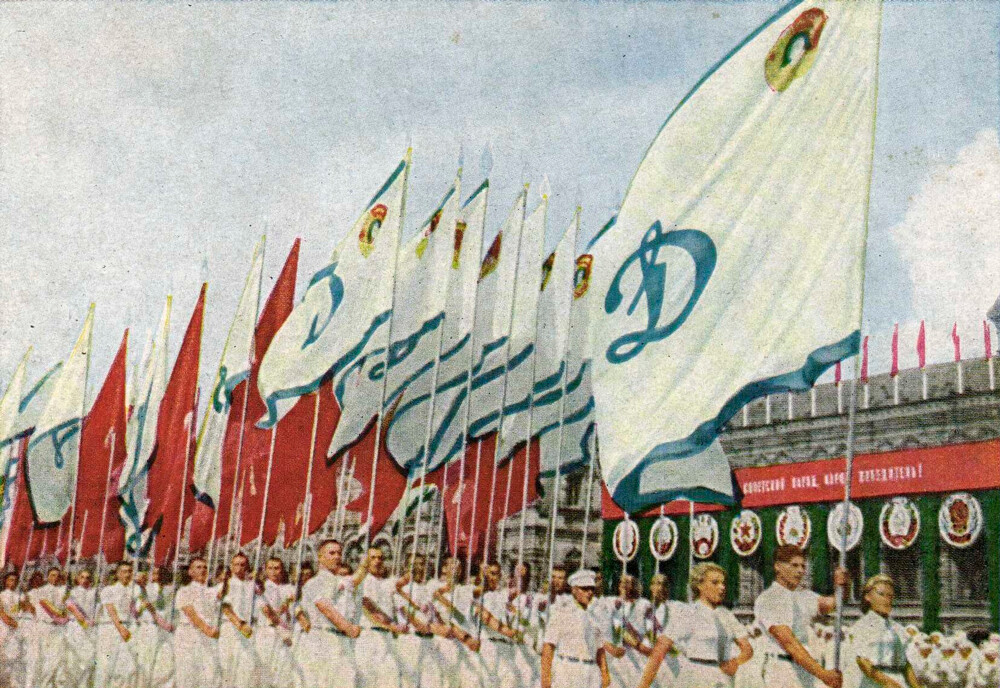
Shot from the film 'All-Union athletic parade', 1945.
Public domainLater on, parades began to be held in honor of May 1 (Labor Day) and November 7 (October Revolution Day), as well as the Spartakiade and other sporting events.
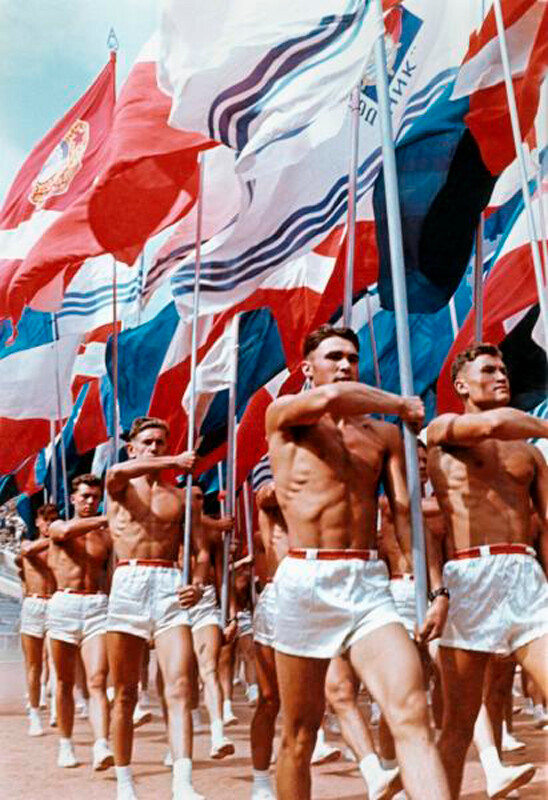
Athletic parade of Spartakiada participants. Luzhniki stadium opening, 1956.
Lev Borodulin/МАММ/МДФ/Russia in photoDear readers,
Our website and social media accounts are under threat of being restricted or banned, due to the current circumstances. So, to keep up with our latest content, simply do the following:
Subscribe to our Telegram channels: Russia Beyond and The Russian Kitchen
Subscribe to our weekly email newsletter
Enable push notifications on our website
Install a VPN service on your computer and/or phone to have access to our website, even if it is blocked in your country
If using any of Russia Beyond's content, partly or in full, always provide an active hyperlink to the original material.
Subscribe
to our newsletter!
Get the week's best stories straight to your inbox